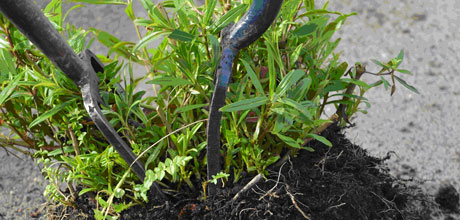Time to Divide Perennials
This article was first published on 31 Aug 2012.

Time to Divide
Spring is the time of regeneration and an ideal time to lift and divide perennials. Plants have overwintered and are now actively growing.
Select plants that are showing signs of dying out in the centre but have good healthy growth around the outer parts.
What
Dividing perennials is literally splitting the plant up into new healthy plants and replanting.
Why
Increases the number of plants at no cost and enables you to retain healthy plants.
Preparation
After lifting the plant out of the ground, trim off dead or dying growth and remove surplus soil.
How
Method of division depends on the growth structure of the plant.
- Pulling apart – This method is suitable for perennials that spread and have mat-like roots. Pull the desired sections of the plant away from the old or dead areas, eg bergamot (Monarda).
- Border forks – Insert a fork into the crown of the plant and use as a lever to pull the plant apart. For stubborn plants, insert a second fork next to the first fork, back to back. You can then lever against each fork to separate the crown of the plant, eg Penstemon
- Spade – When a plant is too dense to ease apart with a fork, use a spade to slice portions of the plant apart eg day lily (Hemerocallis)
- Axe – Use this most extreme of gardening tools for plants that develop a hard woody base that are impenetrable to a spade or fork, eg Agapanthus
After Care
After division, apply compost to the soil and water to reduce stress on the plants.
Linda Hellyer is curator of the herbaceous borders at Dunedin Botanic Garden


